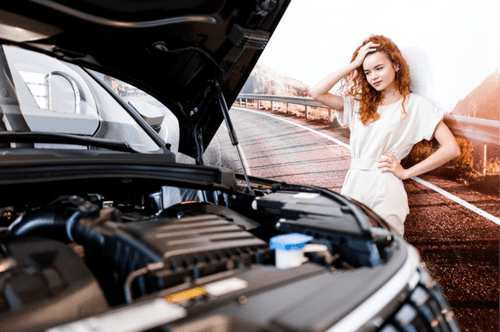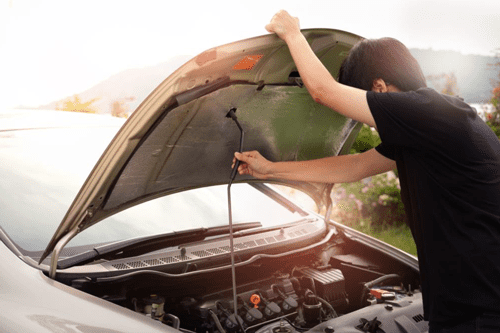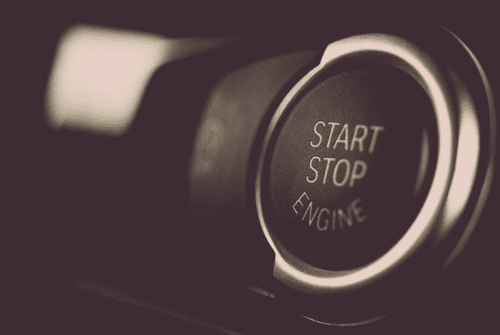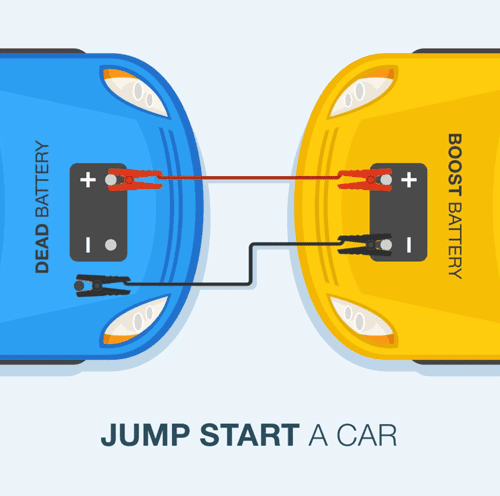- Need Any Help: +1 647-760-5505 or
- info@trubicars.ca

If you’ve ever owned a vehicle, or are thinking about owning your vehicle, you might’ve heard that cars require regular maintenance. This is to ensure that your vehicle is running efficiently and properly. Even if you’re always on top of the maintenance of your vehicle, sometimes things start working and don’t start properly. Car Batteries sometimes die and if you’ve ever had a car battery die, you understand how frustrating it can be. Especially if you have places to go! At Trubicars, our goal is to share our knowledge and driving experience with you so that you can be a safe and responsible driver. We have outlined a step-by-step guide on how to jump-start your vehicle.
As a vehicle owner, you should always have an emergency kit with supplies that you may need in the event of a breakdown or a vehicle not starting. Jumper cables are cables that most people have in their emergency kit in case their vehicle needs a jump start. Once you have your jumper cables follow the steps below to jump your car:

To successfully jump-start your car, you will need to find another vehicle with a working battery. If you are stuck in a public setting such as a mall parking lot or grocery store parking lot, ask the owners of nearby vehicles if they can help you. If you are stuck on the side of the road or not in a public setting, consider calling a close friend or family member to come to help you out.
In most vehicles, car batteries are usually under the hood, located near the engine of the vehicle. To jump-start your vehicle, you will need to have your vehicle and the vehicle giving you the boost parked front to front- or have them closely parked next to each other. This ensures that the jumper cables will reach both batteries.

Once each vehicle is in the proper parked position, make sure both car engines are turned off.
Once you have popped the hood of each vehicle, it’s time to place your jumper cables on the batteries. On each battery, you will find two terminals: Negative and Positive. Each vehicle must be turned off! If you fail to ensure this, you can get an electrical shock. To attach the cables:
If you fail to place the second black clamp on an unpainted metal object on the dead car, there is a higher risk of electrocuting yourself, starting a car fire, sparks, or explosion.
Once all the cables are properly positioned, start the working vehicle’s engine and let it run for a few minutes to charge up the vehicle that has the dead battery.
Start the vehicle that has a dead battery. In most instances, the battery will power back up and your engine will start. If you try turning the key in the ignition and the vehicle still does not start, you may need to replace the whole battery.
After the vehicle has been successfully jumped, you can begin removing the jumper cables. You will need to remove the cables in the reverse order that you put them on. To remove the cables:

Now that your vehicle has been jump-started, remember to thank the individual who helped you out. Also, be sure to drive your car around for a few minutes to recharge the battery. If you fail to let your vehicle run and instead turn it off after it’s been jumped, you may need to redo the jump-starting process. Consider taking your vehicle to a local, trusted mechanic to determine whether or not you need to replace your battery, or if there is another issue with your vehicle. At Trubicars, our goal is to share our knowledge and driving experience with you, this is why we have outlined the steps you need to take to jump-start your vehicle. If you are looking for more information on what to do if your vehicle won’t start, check out the Trubicars website!

 February 13, 2024 by
February 13, 2024 by Reema Sharma
Reema Sharma
 January 17, 2024 by
January 17, 2024 by Trubicars
Trubicars
 January 17, 2024 by
January 17, 2024 by Trubicars
Trubicars
Once you acquire the knowledge provided in
those tests, you are ready to pass the
test,
the first time.
